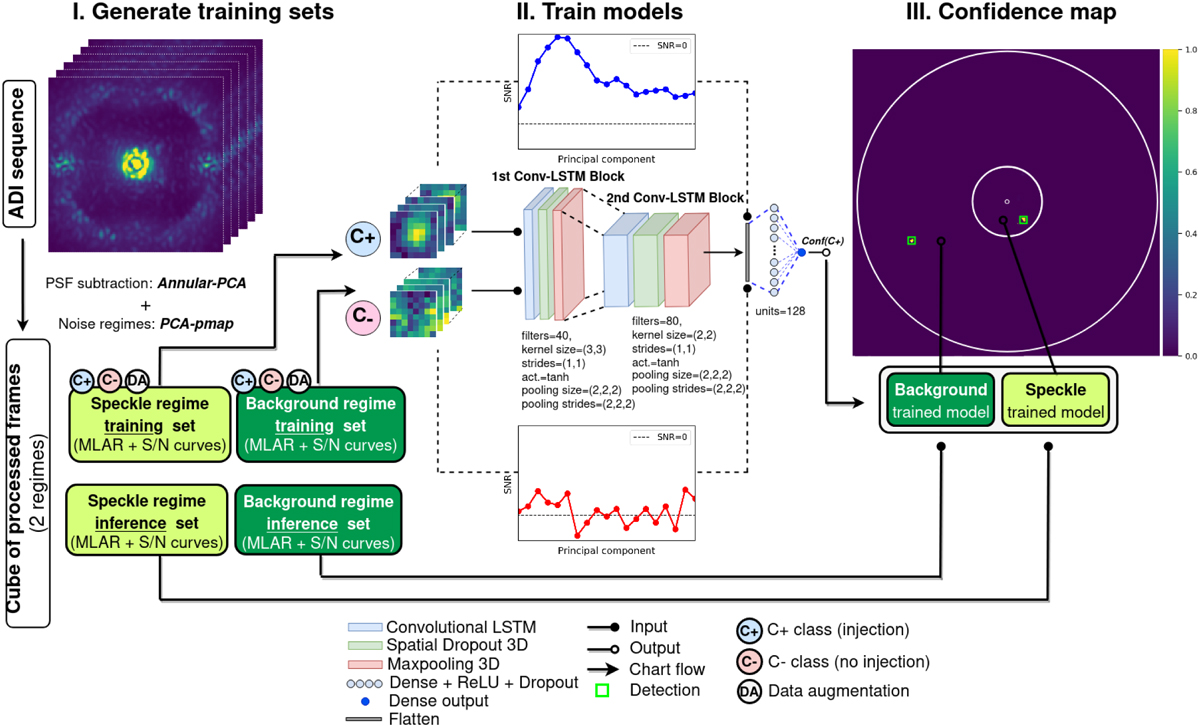Fig. 8

Download original image
Illustration of the three steps within the NA-SODINN algorithm working flow. Left: generation of the training set. NA-SODINN uses the annular-PCA algorithm to perform PSF subtraction and produce the cube of processed frames. Then, it detects residual noise regimes by applying the PCA-pmap technique to this cube, and builds both the training and inference datasets at each regime, which are composed of both MLAR samples and S/N curves. Middle: model training. NA-SODINN trains as many detection models as detected noise regimes using their respective training datasets (for the sake of simplicity, we have not duplicated the central deep neural network). This case contains two noise regimes, the speckle- and background-dominated noise regimes, so that two models are trained. Right: detection map. Finally, NA-SODINN uses each trained model to assign a confidence value to belong to the c+ class to each pixel of the corresponding noise regime field of view.
Current usage metrics show cumulative count of Article Views (full-text article views including HTML views, PDF and ePub downloads, according to the available data) and Abstracts Views on Vision4Press platform.
Data correspond to usage on the plateform after 2015. The current usage metrics is available 48-96 hours after online publication and is updated daily on week days.
Initial download of the metrics may take a while.


